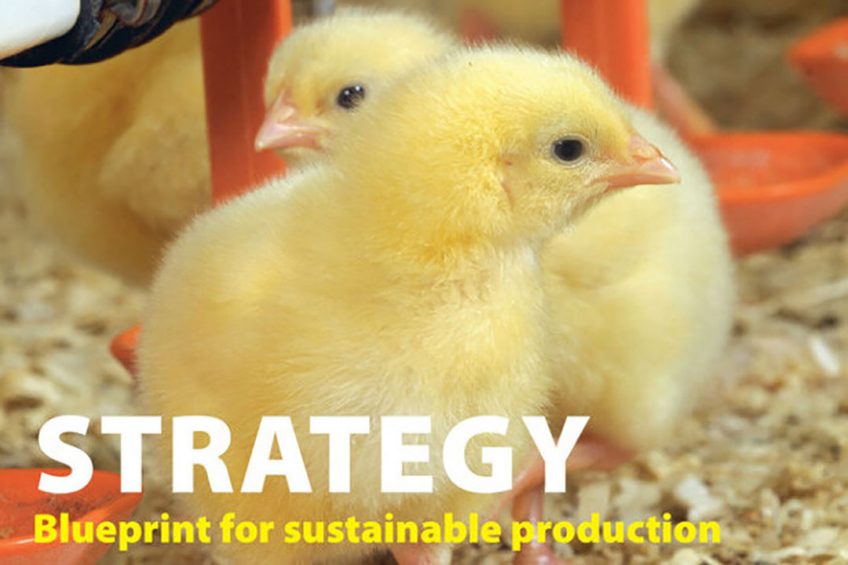Poultry World edition 3 of 2021 now online

This edition of Poultry World looks into the first Egg Farmers of Canada Sustainability Report, which sets out a blueprint for how the industry can build on current practises. Then, researchers have determined that higher bone quality is related to higher blood phosphate levels and less to higher blood calcium levels. And in the US, several major food companies have been exposed for failing to meet their public commitments to source 100% cage-free eggs.
View Poultry World’s digital magazine
Blueprint for sustainable egg production
The first Egg Farmers of Canada (EFC) Sustainability Report has been released and sets out a blueprint for how the industry can build on current practises, putting egg farming at the forefront of sustainable agriculture. It presents ways in which egg farmers are making changes and highlights recent advances.
US food companies under pressure
Many major food companies in the US have committed to moving to cage-free eggs. In its annual 2020 Egg Track report, Compassion in World Farming reported that of the 210 companies tracked, around 63% had made progress toward their commitments. Those who have failed to meet their commitments have been exposed with growing pressure on the industry.

Desperate times call for desperate measures
The Covid-19 pandemic caused the closure of the food service sector in New Zealand and resulted in a steep drop in demand for eggs. Chris Martin, owner of Wairarapa egg farm and its flock of 24,000 free-range birds, explains the oversupply in the country and shares his experience.

View Poultry World’s digital magazine
Pulsed UV light to decontaminate eggs
Penn State College of Agricultural Sciences researchers have discovered that pulsed ultraviolet light can kill pathogens on eggshells. In the US, 9% of all foodborne illnesses are associated with eggs, so reducing the microbial load on eggshells means that foodborne illness outbreaks associated with eggs and poultry meat can be reduced.

Understanding gut health and mycotoxin interaction
Effective mycotoxin management requires looking at the unavoidable problem in its entirety, from the farm all the way to the feed mill and from risk assessment to feed management. Alltech examines and explains this approach, and the significant role of the bird’s gastrointestinal tract, which is the first barrier against ingested chemicals, contaminants and toxins.

Russia places hope on Smena-9 breeders
It is anticipated that Russia’s new broiler crossbreed, the Smena-9, will be patented by the end of the year. Could this mean that the country’s dependence on expensive imports of breeding stock is in sight?

View Poultry World’s digital magazine
Looking at sulphur and sulphate levels in poultry diets
Sulphur, in its organic form, is essential for protein synthesis in poultry. Elevated intake, however, could lead to toxicity and can result in poor growth, disturbed ovary function and wet litter issues.
Higher phosphate level better for bone formation
Recent research has uncovered that it is not calcium but rather the phosphate level that has a significant correlation with bone formation.

Managing heat stress
Modern, highly productive breeds of poultry are more prone to heat stress. This can result in reduced feed intake, and there is also a strong link between heat stress and intestinal inflammation. This is becoming increasingly challenging for the industry as temperatures continue to rise. Could innovative, plant-based nutritional solutions offer value during hot weather?

View Poultry World’s digital magazine
Improving shell quality and egg quantity with the right minerals
During an online seminar, Trouw Nutrition’s global programme manager for trace minerals, Alice Hibbert, explained how precision trace minerals play a key role in optimal performance of laying hens. Poultry World editor Fabian Brockötter delves into the details.

Inflammation and immune activity cost energy
The chicken’s gut is a complex ecosystem in which commensals and pathogens live in dynamic antagonistic interactions. Inflammation may result from any alteration or disruption to these relationships, causing energy-consuming imbalances.

Fresh and responsibly produced meat matter most
Most Colombian millennials choose poultry meat that is natural, fresh, and produced with animal welfare in mind, according to a recent consumer survey. This report is significant as millennials worldwide are considered influential consumers because of their purchasing power and interest in food, health, and well-being.
View Poultry World’s digital magazine
To access the magazine section, where you will find the 3rd edition of Poultry World 2021 as well as other magazines from specialists in the agriculture industry, simply register for free.













